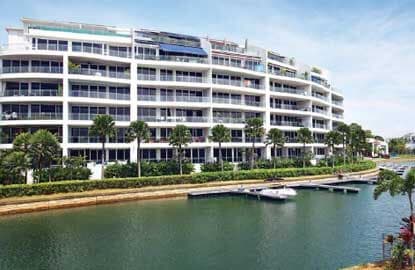
SINGAPORE (Nov 22): Once an investor favourite just a few years ago, Singapore has now sunk to “near the bottom” of the rankings it once topped while struggling with overcapacity, falling demand and a slump in its residential sector.
This is according to the Emerging Trends in Real Estate Asia Pacific 2017 report, a real estate forecast jointly published by the Urban Land Institute (ULI) and PricewaterhouseCoopers (PwC).
Decline in ranking ‘not unexpected’
Based on the report’s findings, Singapore currently ranks at 21st place in investment and 22nd in development on a global scale. These poor rankings are attributable to a combination of economic weakness, excess supply, declining demand, and a residential market where prices have now fallen for 12 straight quarters has created a “perfect storm” for the city state – which also the only Asia Pacific (APAC) market that is suffering a cyclical downturn.
“Singapore's decline in ranking, largely due to over-capacity and decline in demand, is not unexpected. Focusing on the positive, we could be close to the bottom of the cycle and we are seeing opportunities to invest,” says PwC Singapore’s real estate and hospitality leader, Yeow Chee Keong, in a joint release on Monday.
Emergence of positive indicators
Seek Ngee Huat, chairman of both ULI Asia Pacific and Global Logistic Properties (GLP), believes the findings also indicate that investors still believe in the long term fundamentals of Singapore and are on the lookout for investment opportunities.
“When you take a step back and look at all the economies in Asia, and the one place that has strong long-term potential, I think Singapore is the place,” said one interviewee in the report.
For instance, PwC and ULI see the recent sale of Asia Square Tower 1 in June this year as a positive indicator which has set a “benchmark for pricing that should serve as a floor for upcoming deals”. The companies also note signs of increasing demand on the occupancy side.
Despite a downturn in Singapore’s commercial real estate sector, the report has highlighted that Singapore REITs (S-REITs) have taken precautionary measures to ride out the storm – such as locking in cheap financing by issuing longer-duration bonds of up to 15 years. Office REITs in particular, have managed to proactively negotiate with tenants in terms of renewing expiring leases, therefore “sidestepping a looming glut of office space”. The industry in general is also looking at ways to address gearing profiles such as through the issuance of perpetual securities or the sale of assets.
Nonetheless, most of the report’s interviewees who are currently looking at Singapore markets say they will “maintain a watching brief for now” until they discover a more comfortable buying point.
Real estate trends worldwide
On a global basis, the key takeaways from this year’s report include falling yields, albeit at a slower rate; the popular theme of investments in metropolitan areas given urbanisation trends and land shortages in city centres; as well as a continued preference for core assets.
ULI and PwC predict that Asia’s capital will continue to migrate abroad in the coming years, in “quantities that will be large enough to change the dynamics of real estate investment globally”. While most of these outflows are still originating from China, fund managers have also reported some early activity by Japanese institutional capital in global real-estate equities markets.
Additionally, the report reflects how investors with a mandate for higher return strategies are also migrating up the risk curve in terms of sectors and geographically, with increasing attention turning to emerging markets such as India and Vietnam.